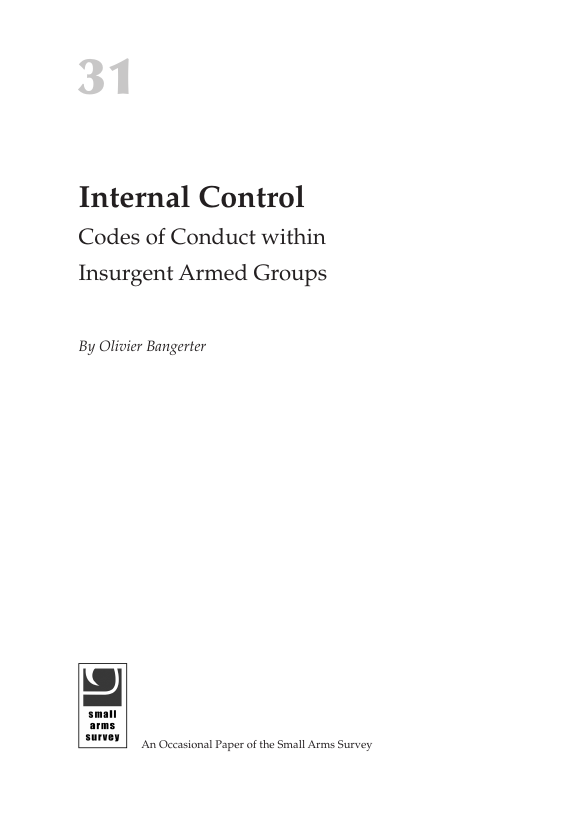
Internal Control: Codes of Conducts within Insurgent Armed Groups (Occasional Paper 31)
Armed groups, whatever their objectives, tend to rely on similar mechanisms to control their fighters. These include a recruitment process that aims to provide the group with the appropriate quantity and quality of personnel; a socialization process for new recruits (such as through oaths and initiation rituals); and the elaboration of internal regulations—such as codes of conduct— and their dissemination among the rank and file.
Internal Control: Codes of Conduct within Insurgent Armed Groups, a Small Arms Survey Occasional Paper, provides a methodical definition of what constitutes a code of conduct, and how it compares to other types of internal regulations known to have been used by armed groups.
While codes of conduct differ widely between armed groups in form, structure and name, they all constitute part of the internal regulations of armed groups, defining the type of behaviour that the leadership expects from all of its members.
Internal Control uses a number of case studies to reflect on the conditions under which codes of conduct are effective in controlling the behaviour of fighters. Finally, the report examines whether codes of conduct are a potential tool for enhancing respect for humanitarian norms, with a particular focus on weapons control.
The report’s main conclusions include the following:
- Codes of conduct are a specific type of internal regulation, and it is necessary to regard each type of internal regulation as distinct.
- Armed groups have issued no fewer than seven distinct types of internal regulations of varying lengths and purposes.
- The effectiveness of codes of conduct depends on a number of factors, such as the clarity of instruction and the backing of leadership.
- The content of a code of conduct is by definition general and rarely addresses weapons control issues explicitly.
This report will be a useful reference document to assist international criminal courts, the humanitarian sector, and the research community in deepening their understanding of codes of conduct, and of the utility of these regulations in furthering their respective mandates.
See also the report summary